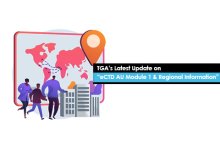In a general scenario, it is important to share the clinical trial analysis to increase the scope of further research and transparency in the flow of information. However, there are different levels of information that needs to be distributed to the public. A controlled flow of information is vital to monitor that no sensitive data such as patient data listings in the clinical reports or the result summaries is distributed. This is where the concept of data redaction comes into the picture.
Analyzing the extent of risk factors associated with a piece of information concludes what all data needs to be redacted. Other factors that determine the redaction of information are based on the direct and indirect personal identifiers recommended by the European Union (EU) and HIPPA (Health Insurance Portability and Accountability Act of 1996) data protection guidelines.
What Information should be Redacted?
Let’s find out what aspects of the information in a clinical trial document gets redacted in the process.
- Personal Information
Any information mentioning the initials, names, phone numbers, signatures, photograph, email addresses, designations, vendor name, company and site staff, reviewing committee members, etc. are redacted.
- Non-Sponsor Corporation Titles and Investigator’s Information
This information entails details about the vendor, developer partner or the investigator name for whom, there is no legitimate contractual agreement exist to verify, is redacted.
- Information related to the subjects or patient ID numbers and the associated description such as pregnancy result, congenital aberration, and use of any forbidden drug
- Mail addresses for patient, research institute, IDMCs/SDACs, investigator, and vendor
- Demographic information of subject or patient such as age, height, DOB, weight, sex, occupation, race, etc.
- Unique identifiers such as IDs related to staff, center, lab, investigator, case, treatment number, manufacturing control numbers etc.
- Incident and evaluation dates allied with the patient are redacted completely.
In Conclusion
The intricate process of redaction of various regulatory documents demands high precision, strategic approach and thorough understanding of the information to be redacted. Few common approaches are acceptable by EMA such as the rules of thumb or the quantitative method, to analyze the data for redaction. In order to align with the mandates, biotech and pharmaceutical companies need to re-identify and redact the information from various documents like clinical study reports and submission documents. The entire process is time-consuming and expensive grounded on the need to attain 100% accuracy for all the documents to be revised manually. In such scenarios, Medical writing teams having extensive expertise in this scope with in-depth knowledge of redaction in regulatory documents are advisable for the companies to go with their strategies.





